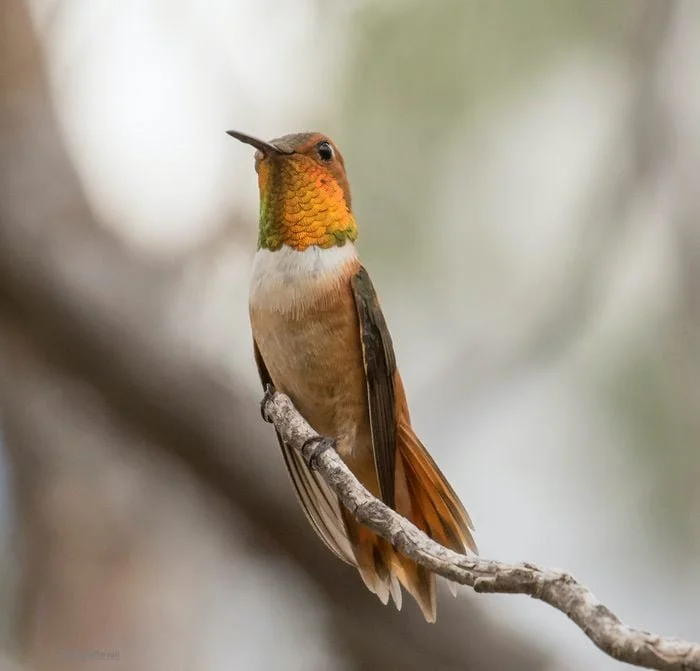Species Profile: Rufous Hummingbird
Common Name: Rufous Hummingbird
Scientific Name: Selasphorus rufus
Location: Occasionally winters in Central Texas, especially in areas with abundant flowering plants and hummingbird feeders. Found in gardens, wooded neighborhoods, and brushy edges.
Mating Habits: Does not typically breed in Central Texas. Breeding occurs in the Pacific Northwest and mountainous areas. Males perform shuttle displays and pendulum flights to attract mates; females build nests in trees or shrubs.
Seasonal Habits / Migratory Patterns: One of the longest-distance migrators among hummingbirds. Seen in Central Texas primarily from late fall through early spring. Breeds in the northwestern U.S. and Canada, winters in Mexico and the southern U.S.
Ecological Relevance: Plays a role in pollinating late-blooming native plants during its overwintering period in Texas. Its ability to thrive in cooler weather allows it to forage when other pollinators are less active.
Interesting Facts:
Males are bright orange with an iridescent red throat.
Exceptionally aggressive and territorial, often chasing off larger birds from feeders.
Can remember specific flower locations and timing of nectar availability.
Native Plant Associations: Feeds on autumn-blooming species such as flame acanthus, salvia, Turk’s cap, and frostweed. Relies on hummingbird feeders in winter.
Conservation Note: Keep feeders clean and filled from October to February to support overwintering individuals. Late-season native flowers can provide crucial nectar sources.

